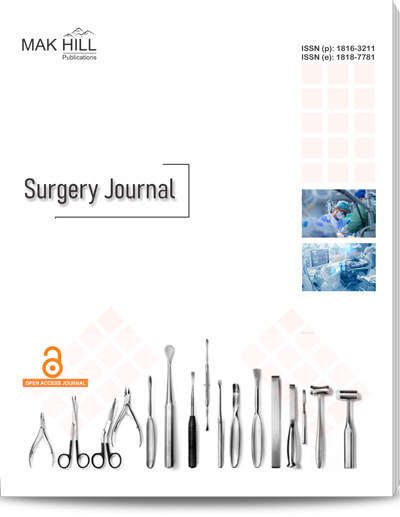
Surgery Journal
ISSN: Online 1818-7781ISSN: Print 1816-3211
Abstract
The difficult condition known as overt obscure gastrointestinal bleeding (OGIB) frequently requires intraoperative endoscopy (IOE), which has a significant risk of morbidity and death. The purpose of the study was to compare the various methods for carrying out IOE for overt OGIB. The data of 98 patients who had trans‐enterotomy IOE (IOE‐E) or other methods including peroral IOE (IOE‐oral), trans‐anal IOE (IOE‐anal), or combined route (IOE‐ combo) were retrospectively evaluated. Analyses were conducted on patient characteristics, demographics, diagnostic test results, IOE findings and follow‐up outcomes. Every one of the 98 patients had IOE. The IOE‐E group comprises 31 patients, the IOE‐oral group comprises 26, the IOE‐anal group comprises 23 and the IOE‐combo group has 18 individuals. In 72 patients, long‐term follow‐up data (>6 months) was successfully gathered. IOE‐E has the shortest operation time (43.2±17.4 min, P<0.05), lowest post‐operative morbidity rate (16%, P<0.05) and shortest recovery period. hospital length of stay (6.7±5.1 days, P<0.05), as compared to the other three approaches. For the treatment of overt OGIB, intraoperative endoscopy via enterotomy is a safer and better option.
How to cite this article:
Hardik Vyas and Rajendra Upadhyay. Intraoperative Endoscopy Using Enterotomy is Used to Diagnose Obscure Gastrointestinal Bleeding.
DOI: https://doi.org/10.36478/10.36478/maksj.2024.1.1.5
URL: https://www.makhillpublications.co/view-article/1816-3211/10.36478/maksj.2024.1.1.5